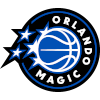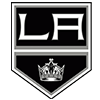Joining an existing dynasty baseball league can be difficult. A lot of thought and planning has to take place to win one or many championships. As a member of multiple dynasty leagues in which I have taken over for a previous owner, I have compiled a list of five important steps that every new owner should follow to ensure long-term success.
1. Know the Rules
The first thing that needs to be done when inheriting a franchise is to thoroughly read through the league rules and settings. If something doesn't make sense or clarification is needed, it's imperative that you talk to the league commissioner before making any roster decisions. Experienced owners have no problem taking advantage of a newbies in dynasty leagues. This can be looked at as an opportunity to steal some talent before the new owner becomes fully acclimated to the league. Don't make that early mistake!
When looking at the rules and settings, it's important to look for the following things:
A. Scoring/Categories
B. Rosters
C. Contracts/Budgets
D. Offseason/Draft
E. Trades
F. Free Agency
For scoring and categories, it's essential to check if the league uses a rotisserie, head-to-head or points system. Depending on the system, certain players may be more valuable than in other leagues. When it comes to the roster, make sure to double check the number of active, bench and minor league players that should be rostered at all times. This will allow you to determine your areas of strength and weakness.
Joining an existing dynasty baseball league can be difficult. A lot of thought and planning has to take place to win one or many championships. As a member of multiple dynasty leagues in which I have taken over for a previous owner, I have compiled a list of five important steps that every new owner should follow to ensure long-term success.
1. Know the Rules
The first thing that needs to be done when inheriting a franchise is to thoroughly read through the league rules and settings. If something doesn't make sense or clarification is needed, it's imperative that you talk to the league commissioner before making any roster decisions. Experienced owners have no problem taking advantage of a newbies in dynasty leagues. This can be looked at as an opportunity to steal some talent before the new owner becomes fully acclimated to the league. Don't make that early mistake!
When looking at the rules and settings, it's important to look for the following things:
A. Scoring/Categories
B. Rosters
C. Contracts/Budgets
D. Offseason/Draft
E. Trades
F. Free Agency
For scoring and categories, it's essential to check if the league uses a rotisserie, head-to-head or points system. Depending on the system, certain players may be more valuable than in other leagues. When it comes to the roster, make sure to double check the number of active, bench and minor league players that should be rostered at all times. This will allow you to determine your areas of strength and weakness. Contracts and/or budgets can play a major factor in the value of specific players. Be sure to double and triple check the league budget/contract rules before making any early season moves.
The offseason will be different in each league. Some may allow you to keep all of your players for the next season, others may limit you to a certain amount. This can lead to owners having to make important roster decision before the keeper deadline. Many times, the draft in a dynasty league will go off last year's standings. The draft is one of the best ways to improve your team during the offseason as it allows you to put your initial stamp on the roster. Before making any trades, understand the different methods of trading. Can you trade players for draft picks? Can you trade for more budget money? These are questions that you will need to answer before pulling the trigger on any deals. Finally, free agency is a great way to find players throughout the season. Many leagues use a FAAB budget while others work on a first-come, first-served or waivers system.
Failure to do homework on the above information can lead to an early hole that might be tough to dig yourself out of. The first time I took over a dynasty-league franchise, I almost made the big mistake of trading one of my best players who was on a very cheap long-term contract. An owner sent me a trade offer soon after I took over, and from the outside it looked like a more than fair offer. It turns out the players he wanted to trade me were going to become free agents the following season, while the player I was giving up was under team control for five seasons.
2. Learn the Team
Taking over a team in a dynasty league can seem pretty overwhelming initially. When you don't know the person you are replacing, it's hard to really know the thought process when he was putting together the roster. Therefore, the first thing an owner needs to do is get acclimated with each player. After becoming familiar with the players, owners can begin to determine their areas of strength and weakness heading into the offseason. This will allow the owner to begin to put together a team value chart.
A team value chart is a method that I developed over the years to find out which players have the most value to your team each offseason. Essentially, this chart is a spreadsheet that includes the following information:
A. Player Name/Position/Team/Age
B. Player Contract/Years Remaining
C. Percent of Budget/Contract Years
D. Re-sign Year/Price
E. Trade Value (1-10)
F. Injury Risk (1-10)
G. Overall Team Value (1-10)
Example:
| PLAYER | AGE | CONTRACT /YEARS LEFT | % BUDGET ($260) | RE-SIGN YEAR | RE-SIGN PRICE | TRADE VALUE | INJURY RISK | TEAM VALUE |
| Jose Altuve, 2B | 24 | $10/2 | 3.8 | 2017 | $20/YR | 10 | 1 | 10 |
| Mike Trout, OF | 23 | $60/1 | 23.1 | 2016 | $70/YR | 6 | 1 | 8 |
Player age is an important factor when it comes to the future of my franchise. When I put together a roster, I want to put myself in the best position to be competitive year after year in the league. Knowing the current landscape of a player's contract is also extremely important in determining his future with your franchise. In the above example, Mike Trout costs $60, while Jose Altuve costs $10 per season. Also, Altuve has one more year on his contract than Trout. This gives Altuve a higher overall team value than Trout. While this is an imperfect system, it goes to show that sometimes even the best player in the game may not be the most valuable dynasty player on your team. This can open up the door for some moves during the initial offseason of ownership.
3. Develop the Plan
Before making any moves in your franchise, it's essential that a plan is developed and goals are set. The big mistake that many franchise owners make is that they start making moves without any real idea of what direction they are planning to go. Therefore, owners need to decide if they are playing to win now or building for the future. The first dynasty league team I took over, the average age of the players on my team was 32. This left me with two choices. I either go for the championship the first season and then hope my players still have value at the end of the season, or blow it up right from the beginning. The absolute worst thing an owner can do in their first year of a dynasty league is finish in the middle of the standings. For me, you either want to finish near the top or near the bottom. Finishing at the top usually means you are going to bring some money home with you. Placing near the bottom will most likely lead to a higher draft selection the following offseason.
I've always wondered what Theo Epstein would be like if he took over a dynasty-league franchise. His model with Chicago has yet to pay dividends, but it will be hard to find people that don't believe the Cubs will be contenders for the next five to 10 seasons. This is exactly what I want people to think about my team in a dynasty league. I want them to be able to look at my roster and know that I can be a threat year in and year out. While there's no evidence to support that building around young players and/or a strong minor league system is the way to go, it certainly suggests you might get the most value out of those players for a longer time.
Every dynasty-league franchise I have ever taken over has resulted in a major roster shakeup. For me, it just seems like the right path to take. It allows me to trade for and draft the players I really want to build my team around. The downside of this strategy is usually a season or two of losing. It's really a long-term investment that looks to pay out in the long run. While there are no guarantees in baseball, the best thing an owner can do is put a team in the best position to win for years to come.
4. Start the (Re)Build
Building or rebuilding in a dynasty league is the culmination step in the long initial adoption process. To successfully rebuild, owners must complete steps one, two and three to make sure that all bases are covered. Once ready, the wheeling and dealing can finally begin. If there's one thing I've learned from this process, it's that a trade or move doesn't have to be made if the price isn't right. If you decided in step three that there is a player you really want to trade because he isn't part of your future plans, that doesn't absolutely mean he has to go right away. Some owners have the tendency to get anxious and don't get adequate return value for the players they want to part with. If this happens, it may alter the plan/goals set before the process began.
The strategy that I have found success with involves building through youth. Once my team has gotten to a point where it's ready to compete, I then consider moving some youth pieces for established pieces that can help lead me to a championship. In dynasty leagues, there are always going to be owners who want to play with the shiny new toy. High-end prospects can return value that you would never fathom if you play in redraft leagues.
If you choose to build instead of rebuild when taking over for a team, make sure you target pieces that can help you beyond just the first year. Don't get me wrong, it's always nice to win a championship, but winning multiple championships and creating a dynasty can be an even greater prize.
5. Make the Commitment
Another mistake I have seen several owners make in dynasty leagues is giving up before the plan has taken shape. It's hard for some people to stomach the idea that finishing poorly can actually be a benefit in regard to long-term success. Trust the decisions you made when you first took over your team.
Just like any plans or goals set in life, it's also all right to make adjustments to the ones set in your dynasty league. Some players may develop a lot sooner than you first expected. Others may struggle longer than you thought they would. That's going to happen. If it does, feel free to alter the goals set in the initial offseason process.
Another piece of advice I give to dynasty-league owners is that you should constantly be looking to upgrade your team. Just because you decide a player is a piece of your future, don't make him untouchable. If an owner is willing to overpay for a player, you should always listen and see what they have to offer. Some of the best fantasy baseball managers are ones that live by the philosophy that every player has a price.
Conclusion
Joining a dynasty fantasy baseball league can be both fun and exhausting. Countless hours of research and sometimes sleepless nights mulling over trade offers, draft picks or free agent pickups can be the difference between success or failure. The steps listed above can provide assistance to new owners looking to compete both in the present and future of dynasty leagues. It's not a fool-proof system, but it allows the opportunity for owners to put themselves in the best position to bring home fantasy championships.





































